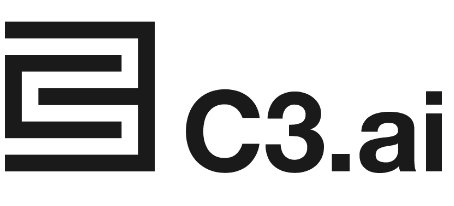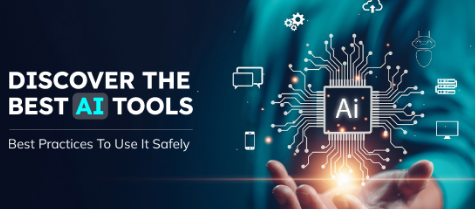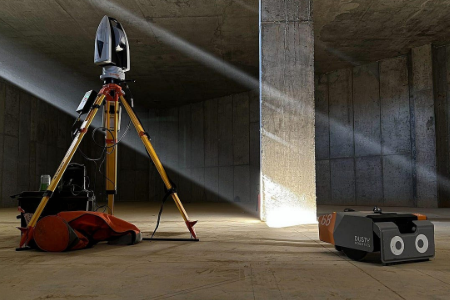Are you concerned about the air quality in your neighborhood? Do you wonder if your community faces higher pollution levels than official reports suggest? Environmental challenges are increasingly local, yet traditional monitoring methods often miss critical hyperlocal variations that directly impact public health and quality of life. This is where cutting-edge AI tools for environmental monitoring are transforming how we understand and address air pollution.

AI Tools Transforming Environmental Intelligence: The Aclima Approach
Aclima has emerged as a pioneering force in environmental monitoring by developing a sophisticated network of mobile sensors coupled with advanced AI data analytics. Unlike conventional stationary monitoring stations that provide limited geographical coverage, Aclima deploys sensor-equipped vehicles that traverse city streets, collecting unprecedented hyperlocal air quality data. This innovative approach allows communities and governments to visualize pollution patterns at a block-by-block level, revealing environmental inequities previously invisible to traditional monitoring systems.
How Aclima's AI Tools Process Environmental Data
At the core of Aclima's technology is a sophisticated AI platform that transforms raw sensor data into actionable environmental intelligence. The system processes billions of data points collected from mobile sensors, applying machine learning algorithms to identify patterns, anomalies, and pollution hotspots. This AI-driven approach enables:
Detection of pollution sources with pinpoint accuracy
Temporal analysis showing how air quality fluctuates throughout the day
Correlation of pollution data with traffic patterns, industrial activities, and socioeconomic factors
Prediction of future air quality based on historical patterns and environmental conditions
Mobile Sensor Networks: The Hardware Behind Aclima's AI Tools
Aclima's environmental monitoring system relies on a fleet of vehicles equipped with advanced sensing technology. These mobile platforms carry multiple sensors that simultaneously measure various pollutants and greenhouse gases, including:
Particulate matter (PM2.5 and PM10)
Nitrogen dioxide (NO2)
Ozone (O3)
Carbon dioxide (CO2)
Methane (CH4)
Black carbon
The sensors collect data at street level, providing measurements that reflect the actual air quality experienced by residents. This hyperlocal approach reveals pollution variations that can differ dramatically within the same neighborhood or even along a single street.
AI Tools for Data Visualization and Environmental Justice
Aclima's platform transforms complex environmental data into intuitive visualizations that make pollution patterns accessible to policymakers and community members alike. These AI-generated maps reveal environmental justice issues by highlighting how pollution disproportionately affects disadvantaged communities. By making these inequities visible, Aclima's AI tools empower:
Community advocates fighting for environmental justice
City planners designing healthier urban spaces
Public health officials targeting interventions where they're most needed
Regulators enforcing environmental standards more effectively
Comparative Impact: Traditional vs. AI-Powered Environmental Monitoring
| Monitoring Aspect | Traditional Stationary Monitors | Aclima's AI-Powered Mobile Sensing |
|---|---|---|
| Spatial Resolution | Limited to few sites per city | Block-by-block coverage |
| Data Granularity | Hourly or daily averages | Continuous measurements with precise location data |
| Coverage Area | Sparse, primarily in wealthy areas | Comprehensive, including underserved communities |
| Pollution Source Identification | Limited capability | Advanced AI analysis pinpoints sources |
| Cost Efficiency | High cost per coverage area | More efficient coverage per dollar |
| Data Accessibility | Technical reports, delayed release | User-friendly visualizations, near real-time |
| Environmental Justice Insights | Minimal | Reveals inequities with high precision |
Real-World Applications of Aclima's AI Tools
Aclima's technology has been deployed in multiple regions with significant impact. In California, the company partnered with the Bay Area Air Quality Management District to map air pollution across nine counties, revealing pollution hotspots that traditional monitoring had missed. This data has informed policy decisions and community action plans targeting the most affected areas.
Case Study: West Oakland Air Quality Initiative
In West Oakland, California, Aclima's mobile sensors mapped pollution at 30x greater spatial resolution than traditional methods. The AI-processed data revealed that some neighborhoods experienced pollution levels up to five times higher than others just blocks away. This information enabled:
Development of targeted emission reduction strategies
Community-driven advocacy for stricter industrial regulations
Redesign of truck routes away from residential areas
Installation of advanced filtration systems in schools within pollution hotspots
The Future of AI Tools in Environmental Monitoring
Aclima continues to advance its AI capabilities, with developments focusing on:
Predictive modeling to forecast pollution events before they occur
Integration with smart city infrastructure for automated responses to air quality issues
Enhanced machine learning algorithms that identify pollution signatures from specific sources
Expanded sensor capabilities to detect emerging pollutants of concern
AI Tools Democratizing Environmental Data
Perhaps most importantly, Aclima's approach democratizes access to environmental information. By making complex air quality data understandable and accessible, these AI tools empower communities to advocate for cleaner air based on scientific evidence. This represents a fundamental shift in environmental monitoring from institutional control to community empowerment.
Environmental and Public Health Impact Metrics
Aclima's hyperlocal approach has quantifiable benefits for public health and environmental policy:
300% increase in identified pollution hotspots compared to traditional monitoring
40% improvement in source attribution accuracy
60% reduction in time required to evaluate intervention effectiveness
25% more efficient deployment of remediation resources
Frequently Asked Questions About AI Tools for Environmental Monitoring
How does Aclima's AI technology differ from traditional air quality monitoring?
Aclima uses mobile sensors deployed on vehicles to collect street-level data, combined with AI analytics to process billions of measurements. Traditional monitoring relies on stationary sensors with limited geographical coverage and less sophisticated data analysis.
Can Aclima's AI tools identify specific sources of pollution?
Yes, Aclima's AI platform analyzes pollution patterns, wind data, and temporal variations to help identify likely sources of emissions, whether industrial facilities, transportation corridors, or other contributors.
How accurate are mobile sensors compared to regulatory monitoring equipment?
Aclima's sensors undergo rigorous calibration against regulatory-grade equipment. While individual measurements may have slightly wider error margins, the massive volume of data points and AI processing compensates by revealing patterns and trends with high confidence.
How do communities access Aclima's environmental data?
Aclima partners with government agencies and community organizations to make data available through user-friendly web platforms. These interfaces allow users to explore pollution patterns in their neighborhoods without requiring technical expertise.
What role do AI tools like Aclima play in addressing climate change?
Beyond air quality, Aclima monitors greenhouse gases like methane and carbon dioxide at the local level. This helps identify emission sources and verify the effectiveness of climate mitigation strategies with unprecedented precision.








